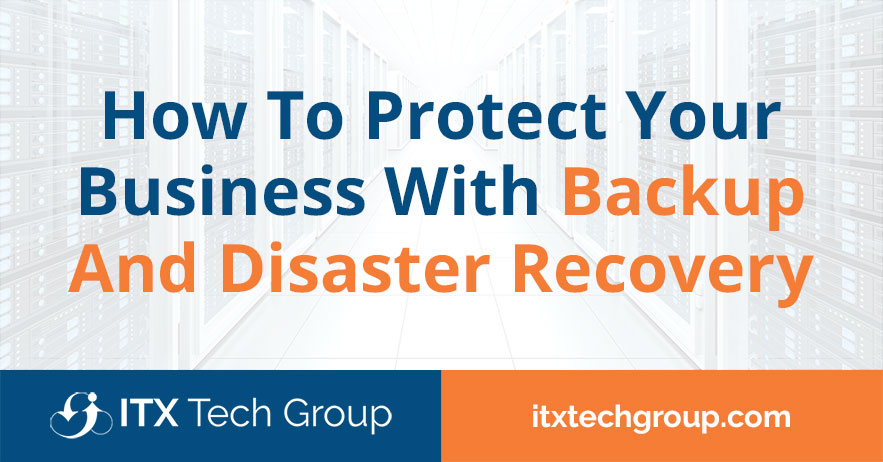In an era where technology underpins almost every facet of modern business, the need to ensure uninterrupted operations and data security is paramount.
Disruptions, whether caused by cyberattacks, hardware failures, natural disasters, or human errors, can have severe consequences for businesses. This is where an effective Backup and Disaster Recovery (BDR) strategy comes into play.
In this article, we’ll explore how you can protect your business by implementing an effective backup and disaster recovery plan.
Assess Your Business Risks
The first step in creating a solid BDR plan is to identify the potential risks and threats that could impact your business. Consider both internal and external factors, such as cyber threats, hardware failures, power outages, floods, and fires.
By understanding these risks, you can tailor your BDR strategy to address specific vulnerabilities.
Develop a Comprehensive BDR Strategy
A BDR strategy encompasses more than just data backup. It includes a well-structured plan for disaster recovery that outlines how your business will respond to various scenarios.
Define Recovery Time Objectives (RTOs) and Recovery Point Objectives (RPOs) for different systems and data to determine how quickly you need to recover and how much data loss is acceptable.
Regular Data Backups
Data backups serve as a safety net, allowing you to restore critical information in the event of a disaster. Implement a regular backup schedule for all essential data and systems.
Utilize both onsite and offsite backups to ensure redundancy and protection against different types of threats.
Test, Test, Test
Regular testing is vital to ensure the effectiveness of your BDR plan. Conduct simulated disaster recovery exercises to assess your team’s readiness and the functionality of your backup and recovery processes.
These tests help identify any weaknesses or gaps that need to be addressed before a real disaster strikes.
Implement Automation
Automation plays a crucial role in ensuring consistent and timely backups. Utilize backup solutions that automate the backup process, reducing the risk of human errors and ensuring that backups are performed on schedule.
Automation also extends to disaster recovery, allowing for swift and streamlined recovery procedures.
Prioritize Critical Systems
Not all systems and data are created equal. Prioritize your critical business systems and sensitive data for backup and recovery.
By focusing on the most essential components, you can minimize downtime and maintain core operations during a disaster.
Secure Backups
Backups themselves must be adequately protected. Encrypt your backups to safeguard sensitive data and prevent unauthorized access.
Store backups in secure, offsite locations, either physically or in the cloud, to ensure they remain unaffected by on-premises disasters.
Communication and Training
A BDR plan is only effective if your team knows how to execute it. Provide thorough training to employees involved in disaster recovery processes. Establish clear communication protocols so that everyone knows their roles and responsibilities during a crisis.
Regular Updates and Revisions
Technology and business environments evolve over time, so your BDR plan should too. Regularly review and update your plan to account for changes in your systems, processes, and potential threats.
Staying proactive ensures your plan remains effective in the face of new challenges.
Engage with BDR Experts
For complex BDR requirements, consider engaging with experts who specialize in disaster recovery and business continuity. Managed service providers can offer insights, guidance, and support to ensure your BDR strategy is well-designed and aligned with best practices.
Conclusion
An effective backup and disaster recovery strategy is the foundation of business continuity in an unpredictable world.
By assessing risks, developing a comprehensive plan, conducting regular tests, and prioritizing critical systems, you can safeguard your business from the crippling effects of data loss and disruptions.
Remember, investing in a well-designed BDR strategy today is an investment in the resilience and future success of your business.
ITX Tech Group has been serving small, medium, and large scale businesses with their IT support needs all over the United States since 2011, so we’re confident we can provide you with affordable, professional IT solutions for years to come!
Connect with us for a free consultation to discuss your business technology needs.

